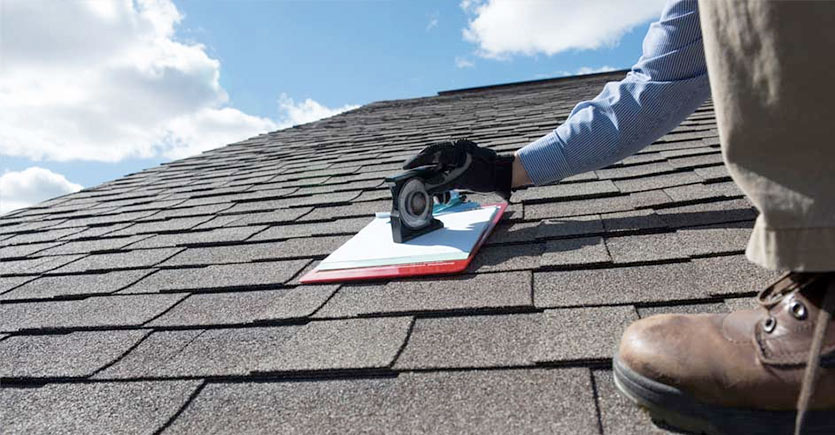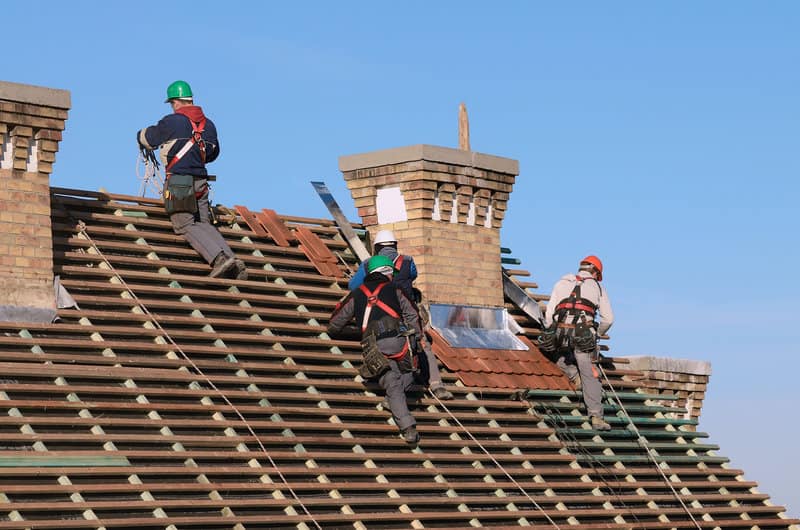How to Examine Different Roofing Choices for Your Building Requirements
Examining roof covering alternatives for your building calls for a detailed method that thinks about various variables such as the meant use of the framework, local environment conditions, and material characteristics - Roofer. It is important to evaluate the benefits and drawbacks of various roof types, from asphalt shingles to steel and clay ceramic tiles, while additionally factoring in initial prices and long-term maintenance.
Assessing Your Building's Needs
To efficiently evaluate roof alternatives, begin by extensively evaluating your structure's demands. Start by taking into consideration the building's planned use, as various frameworks might necessitate varying roof covering specs. Property roofs typically focus on appearances and insulation, while industrial structures might concentrate on longevity and load-bearing capacity.
Following, examine the regional environment problems that will impact roof covering efficiency. Aspects such as temperature changes, precipitation levels, and wind patterns can affect product selection and style. A roof that masters a pleasant climate may not execute as well in areas prone to hefty snowfall or severe warmth.
In addition, examine the architectural integrity of your structure. Ensure that the existing framework can sustain the picked roof materials, specifically if thinking about heavier options. It is likewise critical to assess any neighborhood building ordinance or guidelines that may dictate specific demands for roof.

Comparing Roofing Materials
As soon as a comprehensive analysis of your structure's requirements has been finished, the following step includes contrasting numerous roof covering materials. Each product uses unique benefits and disadvantages, making it important to straighten your option with your particular needs and conditions.
Asphalt tiles are commonly recognized for their cost and ease of installment, making them a popular alternative for residential structures. On the other hand, steel roof covering, understood for its resilience and durability, can endure severe weather conditions yet might come with a greater preliminary investment.
Clay and concrete ceramic tiles supply superb thermal insulation and aesthetic charm, particularly for Mediterranean-style architecture, yet they require an even more robust architectural assistance due to their weight. Timber trembles deal a natural look and great insulation properties however may require much more upkeep and are prone to fire risks.
Evaluating Cost and Budget
Evaluating your roof choices demands a mindful examination of cost and spending plan considerations. The general allocate a roof covering task consists of several variables, including product costs, labor expenditures, maintenance, and prospective long-term financial savings. It is important to develop a clear spending plan prior to exploring specific roofing products, as this will certainly guide the decision-making procedure and aid you useful reference prevent overspending.
Begin by obtaining quotes from multiple contractors to understand labor costs in your region. Make sure that these price quotes consist of all required services, such as elimination of the old visit homepage roof, setup, and any type of added attributes, like insulation or ventilation enhancements - Perrysburg Roofer. Next off, assess the cost of different roof materials, taking into consideration both first installment expenses and anticipated life expectancy

Recognizing Energy Effectiveness
Power performance plays an important function in the option of roofing materials and systems, significantly affecting both power intake and total comfort within a building. An appropriate roof covering can enhance thermal performance, decreasing the requirement for home heating and cooling systems, which subsequently lowers energy costs and lessens environmental effect.
When reviewing roofing options, think about products that show as opposed to take in warm. Light-colored or reflective roof items can significantly reduce roofing system surface area temperatures, leading to reduced energy usage during hot months. Additionally, correct insulation and ventilation are necessary to maximize the power effectiveness of the entire roof system. Insulation prevents warmth transfer, while air flow mitigates warm accumulation in the attic room.
One more crucial element is the roof's long life and upkeep needs. Long lasting products that need less constant replacement add to long-lasting energy savings. The power effectiveness of a roof system can likewise be analyzed through its conformity with well established sustainability rankings such as Power STAR or LEED.
Considering Visual Charm
A roof covering's visual allure significantly influences the total appearance of a structure, matching its architectural style and improving curb charm. Roofer. When evaluating roof covering options, it is important to consider just how the chosen material, color, and style will certainly harmonize with the existing structure and area. A properly designed roofing system can elevate also the most basic have a peek at this site of structures, transforming them right into aesthetic focal points
Different roof covering products use different aesthetic top qualities. Standard tiles may stimulate a classic charm, while steel roofing can pass on a modern, smooth look. In addition, the shade of the roofing material plays an important function; lighter tones can make a structure show up even more roomy, while darker tones may develop a cozier atmosphere.
In addition, building components, such as dormers and eaves, can improve the roofing's visual impact. It is suggested to seek advice from with expert designers or designers to guarantee the picked roofing choice straightens with the general layout intent. Eventually, a roofing system must not only provide functional benefits but additionally add positively to the structure's visual, mirroring the owner's preference and the character of the surrounding environment.
Final thought
